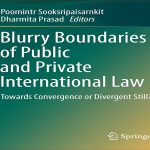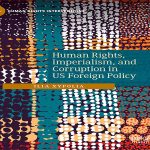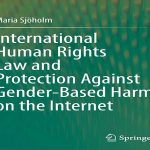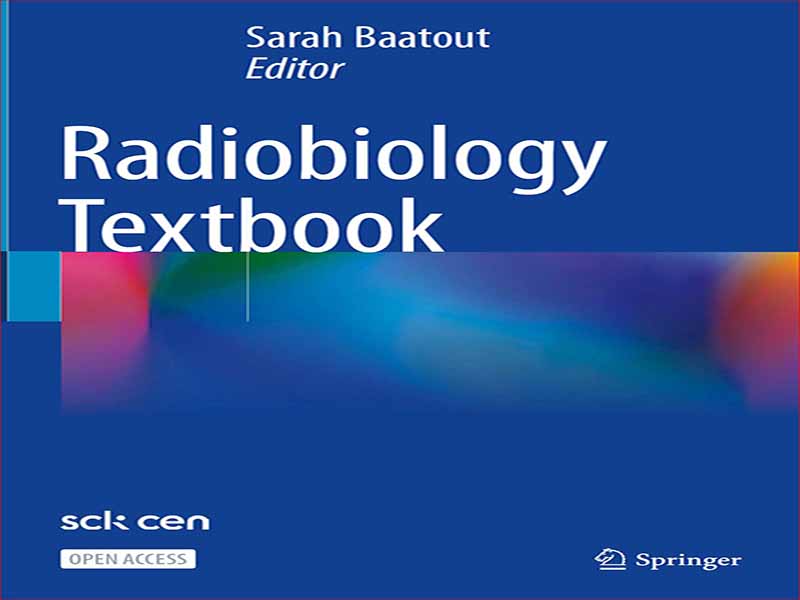- عنوان کتاب: Radiobiology Textbook
- نویسنده: Sarah Baatout
- حوزه: رادیوبیولوژی
- سال انتشار: 2023
- تعداد صفحه: 687
- زبان اصلی: انگلیسی
- نوع فایل: pdf
- حجم فایل: 19.1 مگابایت
با کشف اشعه ایکس در سال 1895 و رادیواکتیویته در سال 1898، هیجان غیرعادی در بین دانشمندان و محققان در سراسر جهان مشاهده شد. معمولاً تصور می شد که انقلاب جدیدی در علم وارد شده است، که ممکن است نوشدارویی برای هر معما باشد. علاوه بر محققان و دانشگاهیان، عموم مردم بسیار مشتاق بودند و ظهور اکتشافات جدید را به عنوان سیگنالی خوشبینانه برای نوع بشر میدیدند. جالب اینجاست که پزشکان به سرعت شجاعت و اشتیاق خود را برای استفاده از پرتوهای تازه کشف شده برای درمان سرطان نشان دادند. این یک چالش بزرگ پزشکی در آن مقطع زمانی بود. آموختن این نکته قابل توجه بود که پرتو ایکس می تواند سلول های زنده از جمله سلول های سرطانی را از بین ببرد و این پتانسیل را دارد که تسکین قابل توجهی برای بیماران سرطانی ایجاد کند. در واقع، تشعشعات ایکس و تشعشعات ساطع شده از مواد رادیواکتیو مانند رادیوم به یک کنجکاوی عمومی و موضوع سرگرمی برای کسانی تبدیل شد که می خواستند تجربیات جدیدی مانند تجسم استخوان ها در بدن و استفاده از رژ لب های رادیومی داشته باشند. در سالهای اولیه، هم دانشمندان و هم مردم عادی از اثرات مضر تشعشعات بیخبر و بیخبر بودند. با این حال، در یک بازه زمانی کوتاه، مشخص شد که محققان پرتو از اثرات مضر تشعشع مانند القای سرطان رنج می برند. به زودی آشکار شد که درک مکانیسمهای اثرات بیولوژیکی پرتوهای یونیزان مانند اشعه ایکس و گاما مهم بود و رشته رادیوبیولوژی متولد شد. دانشمندان همچنین دریافتند که تعیین استانداردهای ایمنی برای تشعشعات بسیار ضروری است. از آنجایی که تشعشع را نمی توان دید، چشید یا بو کرد، دانشمندان شروع به مطالعه برهمکنش تابش با ماده، از جمله اثرات تشعشع بر سیستم های زنده کردند. مطالعات اولیه نشان داد که تابش می تواند سلول های زنده از جمله سلول های تومور را از بین ببرد. چگونگی کشتن سلول های زنده توسط تشعشع به تمرکز اصلی محققان رادیوبیولوژیک تبدیل شد. کسانی که خود را به تحقیقات رادیوبیولوژی می پردازند از زمینه های مختلفی مانند فیزیک، شیمی، و علوم زیستی (علوم زیستی، جانورشناسی، میکروبیولوژی و غیره) بودند. محققان رشته های خاص تحقیقات شدیدی را بر روی اثرات فیزیکی (فیزیک تشعشع)، اثرات شیمیایی (شیمی پرتوها) و اثرات بیولوژیکی (رادیوبیولوژی) تشعشعات آغاز کردند. یکی از مهمترین مشارکتهای تحقیقات رادیوبیولوژیکی، کشف اثر اکسیژن بود که بر مکانیسمهای تولید رادیکالهای آزاد در اثر تشعشع بر روی سیستمهای بیولوژیکی و شیمیایی تأکید داشت. آزمایشها روی تشکیل کلونی سلولی نشان داد که در حضور اکسیژن، مرگ سلولی بیشتری برای همان دوز تابش رخ میدهد. سپس مطالعات رادیوبیولوژیکی بیشتر، پایههایی را برای تنظیم استانداردها و مقررات ایمنی برای قرار گرفتن در معرض تابش ایجاد کرد. جامعه تحقیقاتی بینالمللی تشعشعات سازمانهایی متشکل از کارشناسان را تأسیس کرد و کمیسیون بینالمللی حفاظت در برابر تشعشعات (ICRP) در سال 1928 برای ارائه توصیهها و راهنماییهایی در مورد محافظت از انسان در برابر خطرات پرتوهای یونیزان تشکیل شد. کمیته علمی سازمان ملل متحد در مورد اثرات تشعشعات اتمی (UNSCEAR) سپس در سال 1955 برای تعیین سطح و اثرات تشعشعات یونیزان از بمب های اتمی و قرار گرفتن در معرض حوادث هسته ای تشکیل شد. در همان سال، کمیته آکادمی علوم ایالات متحده در مورد اثرات بیولوژیکی پرتوهای یونیزان (BEIR) برای تعیین و هدایت خطرات قرار گرفتن در معرض تشعشع بر موجودات زنده تأسیس شد. آژانس بینالمللی انرژی اتمی (IAEA) که در سال 1957 ایجاد شد، با هدف راهنمایی و مشاوره در مورد مقررات دوز پرتوهای ایمن برای کارگران و مردم انجام شد. با استفاده شدید از اشعه ایکس و پرتوهای گاما در عمل پزشکی، پرتو در حال حاضر به یک کلمه خانگی در میان عموم تبدیل شده است. در واقع علم پزشکی توانایی فوقالعادهای برای تشخیص و درمان بیماریهای انسانی توسط دستگاهها و پروتکلهای مبتنی بر تشعشع به دست آورده است. در مقابل این زمینه، نیاز به یک کتاب درسی جامع توسط محققان و پزشکان روشن شد. این کتاب درسی رادیوبیولوژی برای پاسخگویی به نیازهای پرتوشناسی و متخصصان پزشکی طراحی شده است، توصیف کاملی از رادیو بیولوژی ارائه می دهد و استعدادهای جوان را برای مشارکت در تحقیق و پذیرش چالش های پیشبرد دانش برای خدمت به بشر تحریک می کند. تحقیقات رادیوبیولوژیکی بیشتری برای پاسخگویی و توضیح چندین موضوع بحث برانگیز، مانند منحنی دوز-پاسخ، تفاوت های مشاهده شده در حساسیت پرتوی فردی، مقاومت در برابر تشعشع سلول های سرطانی و بسیاری سوالات دیگر مورد نیاز است. اثر تشعشع بر سلولهای سوماتیک میتواند فوری یا با تأخیر باشد، اما اثرات ژنتیکی تشعشع تنها سالها و قرنها بعد نشان داده میشود، چیزی که در آینده نیاز به بررسی بیشتر دارد.
With the discoveries of X-ray in 1895 and radioactivity in 1898, unusual excitement was witnessed among scientists and researchers all over the world. It was commonly perceived that a new revolution had arrived in science, which might prove a panacea for every enigma. Besides researchers and academicians, the general public was highly enthusiastic and saw the emergence of new discoveries as an auspicious signal to humankind. Interestingly, physicians were quick to show the courage and enthusiasm to apply newly discovered radiation for treating cancer. That was a great medical challenge at that point in time. It was remarkable learning that X-radiation could kill living cells, including cancer cells, and had the potential to provide marked relief to cancer patients. In fact, X-radiation and radiation emitted from radioactive materials like radium became a public curiosity and an object of fun for those who wanted to have new experiences such as visualizing bones in the body and using radium lipsticks. In early years, both the scientists and common people were unaware and unmindful of the harmful effects of radiation. However, over a short span of time, it became known that radiation researchers suffered from harmful effects of radiation such as induction of cancer. It soon became apparent that understanding the mechanisms of biological effects of ionizing radiation like X-ray and gamma ray was important, and the field of radiobiology was born. Scientists also realized that setting safety standards for radiation was most urgent. Since radiation cannot be seen, tasted, or smelled, scientists began studying the interaction of radiation with matter, including radiation effects on living systems. Early studies showed that radiation could kill living cells, including tumour cells. How radiation kills living cells became the main focus of radiobiological researchers. Those who engaged themselves in radiobiology research came from diverse backgrounds, such as physics, chemistry, and biological sciences (life science, zoology, microbiology, etc.). Researchers from specific disciplines started intense investigations on physical effects (radiation physics), chemical effects (radiation chemistry), and biological effects (radiobiology) of radiation. One of the most significant contributions of radiobiological research was the discovery of the oxygen effect, which emphasized free radical production mechanisms in the radiation action on biological and chemical systems. Experiments on cellular colony formation showed that, in the presence of oxygen, more cell death occurred for the same irradiation dose. Further radiobiological studies then laid the foundations for setting the safety standards and regulations for radiation exposure. The international radiation research community established organizations of experts, and the International Commission on Radiation Protection (ICRP) was formed in 1928 to provide recommendations and guidance about protecting humans against the risks of ionizing radiation. The United Nations Scientific Committee on Effects of Atomic radiation (UNSCEAR) was then formed in 1955 to determine the level and effects of ionizing radiation from atomic bombs and nuclear accident exposures. The same year, the US Academy of Sciences Committee on Biological Effects of Ionizing Radiation (BEIR) was established to determine and guide risks of radiation exposure on living organisms. The International Atomic Energy Agency (IAEA), created in 1957, aimed to guide and advise on safe radiation dose regulations for workers and the public. With the intensive use of X-rays and gamma rays in medical practice, radiation has now become a household word amongst the public. In fact, medical science has acquired an extraordinary capability to diagnose and treat human diseases by radiation-based devices and protocols. Against this backdrop, the need for a comprehensive textbook was made clear by researchers and clinicians. This Radiobiology Textbook is designed to meet the demands of radiation and medical professionals, provides a thorough description of radiobiology, and stimulates young talents to engage in research and accept the challenges of advancing knowledge to serve humankind. More radiobiological research is needed to answer and explain several controversial issues, such as the dose-response curve, the observed differences in individual radiosensitivity, the radiation resistance of cancer cells, and many other questions. The radiation effect on somatic cells can be immediate or delayed, but radiation genetic effects are displayed only years and centuries later, something that needs to be further investigated in the future.
این کتاب را میتوانید بصورت رایگان از لینک زیر دانلود نمایید.
Download: Radiobiology Textbook


































نظرات کاربران